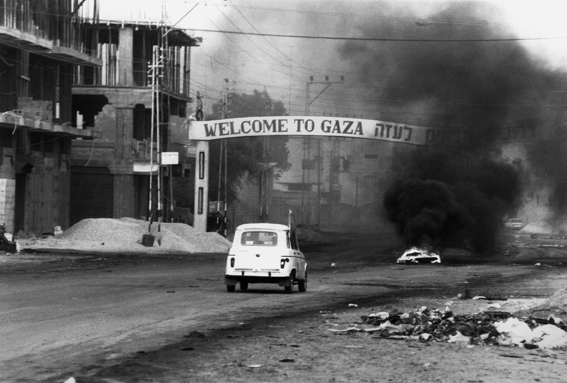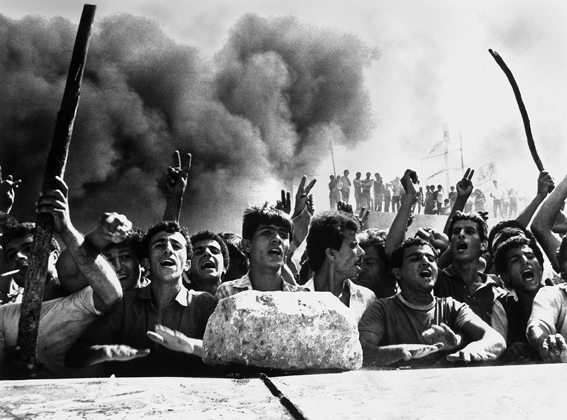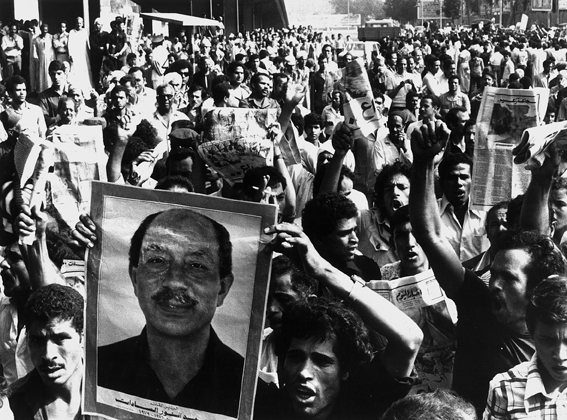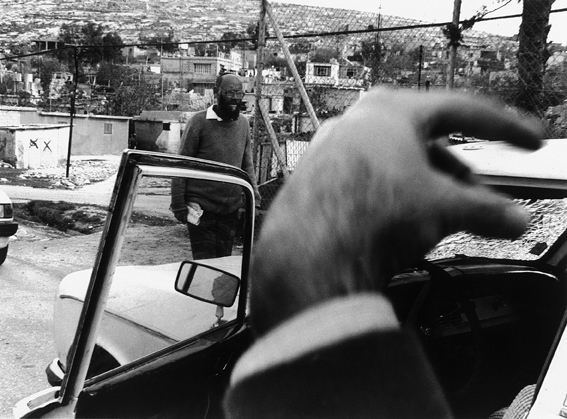| Anat Saragusti, Photographs from “Ha´olam Hazeh”, 1980-1993, The Gallery of The School of Art, Culture and Society, Sapir College, 2009 (curator, catalogue) | | | | The exhibition accompanied The Israel-Sderot Conference on Social Issues, 2009 | | | | Anat Saragusti and the "New Photography" | | | Anat Saragusti's work has been rooted throughout the years in the Israeli critical discourse. From the beginning of her professional career, Saragusti chose to be involved in and influence social processes through the visual language. Saragusti is the first Israeli female photographer to cover combat zones for the Israeli press between the years 1980 and 1993 (1). In a profession mostly dominated by a masculine hegemony, which covers the war and the national conflict from an enlisted standpoint and worships force and its representations in war, Saragusti's activity, and that of other female photographers who shot for the press at that time, have contributed to the creation of a new visual narrative. Their work helped accelerate processes of change and disillusionment that the Israeli society underwent after the Six Day War (1967). Intellectuals like Yeshayahu Leibovich, strongly objected to the occupation and creators like playwright Hanoch Levin voiced sharp criticism against the war, the norms that "give it the seal of approval" and the permeation of militaristic aspects into civilian life. At the same time, social protest movements began to emerge such as the "Black Panthers".
After the Yom Kippur War (1973), and especially in the 1980s, there was a rise in criticism opposing the establishment's hegemony, the elite groups' control in the centers of power and in the division of the State’s budgets, the [Israeli] domination over the Palestinian people and territories. They called for transforming systems and changing world views and norms. On the backdrop of this climate, Saragusti's voice joined a new wave of critical and investigative activism on social, state and political issues. Moreover, the fact that Saragusti's joined Ha'olam Hazeh, a weekly magazine edited by Uri Avneri that expressed subversive and anti-establishment views and was a unique voice in the field of photography, enabled her to build an alternative visual journalistic language. Saragusti photographed the main events of that period: the evacuation of southern Sinai and Yamit; the first Lebanese War, the first (and exclusive) interview given by Yasser Arafat to Israeli journalists in besieged Beirut (1982); the political decline of Prime Minister Menahem Begin; the demonstrations against the war in Lebanon; the hijack of Bus 300; the strengthening of the extreme right; the first Palestinian Intifada (uprising) and many others. Her work provided a stage for the fringes of society, such as activists for disadvantaged social classes and for Palestinian children who worked inside Israel's borders, bringing the disturbing sights into Tel Aviv living rooms: the IDF's conduct in southern Lebanon and throughout the Intifada, the demonstrations against the extreme right-wing, the settlements in the occupied territories, etc.
Saragusti's contribution to the creation of a "new" subversive photography within the journalistic space joined the work of newspapers and magazines that used the photographic medium for creating a critical discourse – the monthly Monitin (operating since 1987), the weekly Koteret Rashit (operating since 1982) and the newspaper Hadashot (founded in 1984). The "new" photojournalism burst into public consciousness also through the museums’ space – in the first and second biennales for photography in Ein-Harod (1986, 1988). From 1994 until 2008 Saragusti worked in the field of documentary TV on Israel's Channel 2 commercial station. The stories broadcast the same trend that so characterizes her photographs – straightforwardness, incisiveness of the message and social involvement.
In the last few years Saragusti has engaged in public and community ventures which, just like her visual work, involve social activism and taking a stand. Saragusti has contributed a great deal to the development of initiatives in the visual field among the underprivileged members of society. She is the creator and administrator of the Audio-Visual Archives for Ethiopian immigrants; she is the founder and director of media courses for Ethiopian immigrants, and also runs media courses for students in Israel's peripheral areas.
(1) Concurrently, Rina Castelnuovo began shooting in 1978 for the Associated Press news agency which distributes photographs abroad, and from 1982 she began to work independently for the foreign press. Castelnuovo currently works for the New York Times.
(2) For example, Aliza Orbach photographed during 1973-1989 for Ha’aretz supplement, for the Jerusalem Post and for the New York Times. Vardi Kahana started her magazine photography career for the monthly Monitin (1982). With the formation of the Hadashot daily newspaper (1984) and until its closing in 1993, she worked as a press photographer. Since 1994 until today, Kahana has been working as a portrait photographer for the "Seven Days" supplement of Yedioth Ahronoth.
Chibi Shichman photographed for Koteret Rashit during the 1980s. Only a handful of male photographers contributed to the development of a critical discourse in journalistic photography at that time, among them: Shlomo Arad, Tzachi Ostrovsky and Gidon Gitai-Weinraub
The exhibition and the catalogue are sponsored by
The Israel Lottery Council for the Arts
The Gallery of The School of Art,Culture and Society, Sapir College
Museums & Visual Arts Department,Ministry of Culture & Sport
The exhibition was made possible courtesy of Yedioth Ahronoth
| | |
| | | |  | | Anat Saragusti, ''Welcome to Gaza'', beginning of the first Intifada, December 1987 | | |  | | Anat Saragusti, Umm Al-Fahm, demonstration protesting the visit of Knesset Member Meir Kahana
who advocated ''encouraging the Palestinian residents to emigrate to Arab countries,'' August 29th, 1984 | | |  | | Anat Saragusti, Funeral of Egyptian president, Anwar Sadat, Cairo, October 1981 | | |  | | Anat Saragusti, Rabbi Moshe Levinger at the Dehaisha refugee camp, early 1980s | | |
|
|
| |
|
|
|